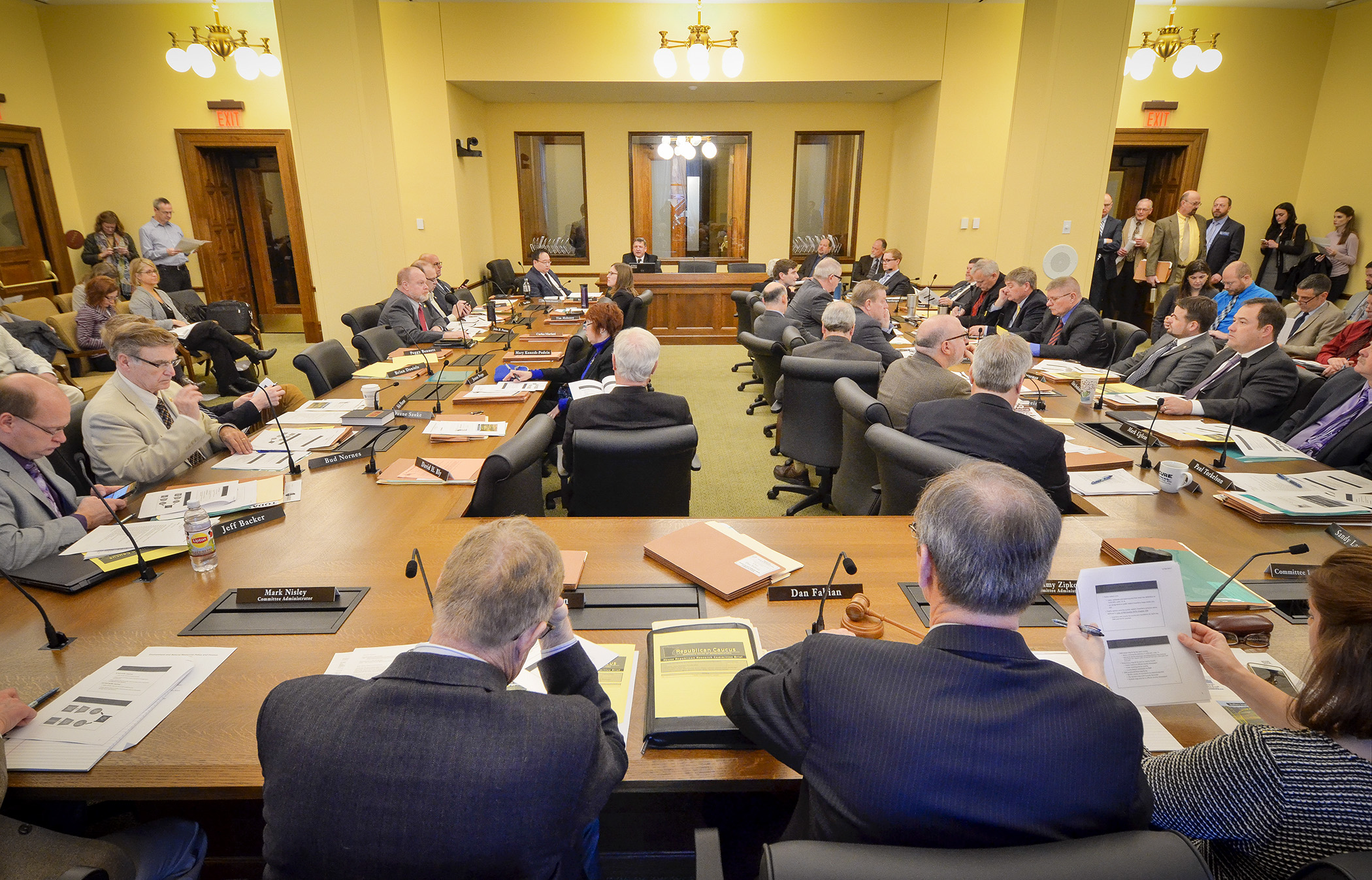Buffer controversy grows once again at Capitol

Despite years of work and two major pieces of legislation, the issue of buffering public waters to improve Minnesota’s water quality is still front and center at the State Capitol.
Proof of that was found Thursday during a four-hour joint meeting of the House Environment and Natural Resources Policy and Finance and the House Agriculture Policy committees.
State officials updated members on efforts to implement a 2015 law requiring buffers of perennial vegetation along public waters by November 2017, and public drainage ditches 12 months later. That law was modified last year in hopes of providing additional clarity to the process.
Although representatives of the Department of Natural Resources and the Board of Soil and Water Resources told the committees much of the impacted land around the state is already in compliance with the new buffer requirements, several members voiced concern about the implementation effort and the current timeframe farmers have to comply.
“The clock is ticking on this law,” Rep. Tim Miller (R-Prinsburg) said.
Miller asked DNR Deputy Director Steve Colvin whether his agency could meet this fall’s deadline and help resolve issues with landowners who believe their waters have been improperly categorized as public, or who have other concerns.
Colvin said he’s confident the deadline can be met and that the Buffer Protection Maps, created to show where buffers must go, are more than 98 percent complete and will be more than 99 percent complete by the end of the year.
Still, Miller said the process worries him.
“I don’t want landowners penalized who can’t get their job done because we didn’t get our job done,” he said.
Several members also raised alarms about the law’s March deadline for counties or water districts to choose whether they will have jurisdiction over buffer compliance.
Lawmakers preferred local control when crafting the 2015 buffer requirements, and they only gave state government jurisdiction over buffers where local officials say they don’t want it. Those decisions are due by March 31, and they’re complicated by the fact that last year’s failed tax bill contained $10 million to help pay for local control.
Rep. Clark Johnson (DFL-North Mankato) said the Legislature “would be wise” to pass that funding before the deadline, but asked what could be done if that didn’t happen. John Jaschke, executive director of the Board of Soil and Water Resources, said local officials could “elect or unelect” that enforcement authority at any time.
However, Rep. Steve Green (R-Fosston) questioned whether there would actually be local control or whether state officials would only “allow them to do what you want them to do.” Green has introduced HF167 to repeal the buffer law. It awaits action by the environment committee.
Rep. Rick Hansen (DFL-South St. Paul) said doing that would amount to “throwing the baby out with the bathwater” when so much progress has already been made.
“We have to try and get this implemented,” Hansen said. “It’s about water quality.”
Related Articles
Search Session Daily
Advanced Search OptionsPriority Dailies
Ways and Means Committee OKs proposed $512 million supplemental budget on party-line vote
By Mike Cook Meeting more needs or fiscal irresponsibility is one way to sum up the differences among the two parties on a supplemental spending package a year after a $72 billion state budg...
Meeting more needs or fiscal irresponsibility is one way to sum up the differences among the two parties on a supplemental spending package a year after a $72 billion state budg...
Minnesota’s projected budget surplus balloons to $3.7 billion, but fiscal pressure still looms
By Rob Hubbard Just as Minnesota has experienced a warmer winter than usual, so has the state’s budget outlook warmed over the past few months.
On Thursday, Minnesota Management and Budget...
Just as Minnesota has experienced a warmer winter than usual, so has the state’s budget outlook warmed over the past few months.
On Thursday, Minnesota Management and Budget...